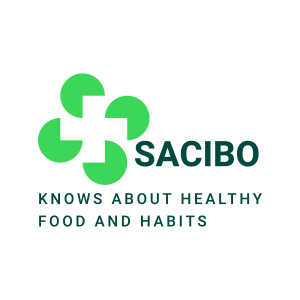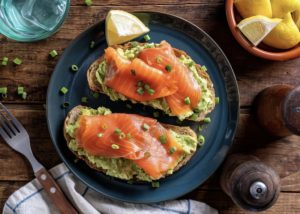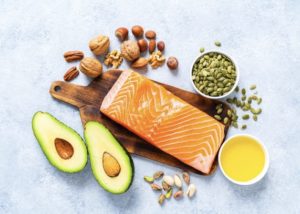- Home
- /
- Healthy Meal
- /
- Diets
- /
- Interval Intermittent Fasting
- /
- Interval or Intermittent Fasting:...
- 1. Transformative Terrain of Interval Fasting
- 2. Comprehension Intermittent Fasting
- 3. Pros of Intermittent Fasting
- 4. Cons of Intermittent Fasting
- 5. Gender-Specific Considerations
- 6. The Role of Intermittent Fasting in Specific Populations
- 7. Guidelines for Practicing Intermittent Fasting Safely
- 8. Frequently Asked Questions about Intermittent Fasting
- 9. Success Stories and Testimonials
1. Transformative Terrain of Interval Fasting
Intermittent fasting, a dietary strategy rooted in ancient traditions, has emerged as a contemporary phenomenon in the realm of health and wellness. This comprehensive exploration aims to dissect the multifaceted aspects of intermittent fasting, unraveling its potential advantages and pitfalls.
As we embark on this journey, we will scrutinize the scientific underpinnings, weigh the evidence from both sides of the spectrum, and navigate the intricate landscape of intermittent fasting, hoping to provide readers with a nuanced understanding to make aware decisions about its incorporation into their lifestyles.
1.1. Definition of Intermittent Fasting
Intermittent fasting, at its core, is not just a diet; it’s a pattern of eating. The essence lies in cycling between periods of eating and fasting, intentionally alternating between nourishment and abstention. Unlike traditional diets that concentrate on what to eat, intermittent fasting emphasizes when to eat. It’s a departure from the conventional three-meals-a-day routine, inviting individuals to explore a diverse array of fasting protocols.
The most general methods include the 16/8 method, which embraces a daily fasting window of 16 hours and an 8-hour eating window, the 5:2 diet, where individuals consume a regular diet for five days and drastically reduce caloric intake for two non-consecutive days, and the eat-stop-eat approach, characterized by 24-hour fasts once or twice a week.
The genesis of intermittent fasting can be traced back to ancient practices, deeply ingrained in cultural and religious rituals. However, its contemporary resurgence stems from a confluence of scientific curiosity and a quest for effective and sustainable approaches to weight management and overall health.
As we delve into the pro and contra of intermittent fasting, understanding its fundamental definition is pivotal. It’s not merely a trend but a holistic approach to eating that has captivated the attention of health enthusiasts, researchers, and those seeking a paradigm shift in their relationship with food.
1.2. Historical Context
To truly grasp the significance of intermittent fasting, it’s imperative to journey back through the corridors of time and explore its rich historical tapestry. The roots of this dietary practice extend far beyond the confines of modern wellness trends, weaving into the fabric of ancient traditions and cultural practices.
a. Traditional in its core
Intermittent fasting is not a novel concept but a time-honored tradition observed by diverse cultures across the globe. Fasting has historical ties to religious rituals, serving as a profound expression of discipline, purification, and spiritual introspection. In Christianity, the Lenten season involves fasting and abstaining from certain foods, while Ramadan in Islam entails a month of fasting from dawn to sunset.
b. Origin of fasting
Beyond the spiritual realm, historical figures like Hippocrates, often called as the father of Western medicine, advocated for periods of abstinence to allow the body to heal. Even the famed philosopher and polymath Benjamin Franklin extolled the virtues of moderation in eating, showcasing a historical acknowledgment of the potential advantages of intermittent fasting.
c. Later times
In the early 20th century, scientists and physicians began delving into the physiological results of fasting, laying the groundwork for contemporary study on intermittent fasting. Pioneering studies by scientists like Clive McCay in the 1930s demonstrated the positive impact of intermittent fasting on lifespan in laboratory animals, sparking a renewed interest in its potential health favors.
As we navigate the landscape of intermittent fasting and its pros and cons, acknowledging its historical evolution unveils a narrative that spreads far beyond the confines of modern dietary trends. It is a practice deeply ingrained in the human experience, a thread that weaves through cultures, religions, and the annals of scientific inquiry, beckoning us to understand its complexities in a broader historical context.
1.3. Surge in Popularity
In current years, intermittent fasting has undergone a remarkable metamorphosis from a relatively obscure dietary strategy to a cultural phenomenon, capturing the zeitgeist of a health-conscious era. The surge in its popularity is not merely a fleeting trend but a seismic shift in the way individuals approach nutrition, wellness, and lifestyle.
Several factors contribute to the exponential rise of intermittent fasting on the global stage. One pivotal catalyst is the dissemination of information through digital platforms and social media. As anecdotes of transformative experiences and weight loss journeys proliferate online, the allure of intermittent fasting spreads like wildfire, creating a virtual community of enthusiasts who share insights, tips, and success stories.
Moreover, the scientific community’s intensified focus on understanding the mechanisms behind intermittent fasting has propelled it into the spotlight. Robust research studies examining its effects on metabolism, cellular health, and longevity have lent credence to its efficacy, further fueling public interest. High-profile endorsements by celebrities and influencers have added a sheen of glamour to the once niche practice, making it not just a health regimen but a lifestyle statement.
The adaptable nature of intermittent fasting plays a pivotal role in its widespread adoption. Unlike rigid and prescriptive diets, intermittent fasting suggests a flexible framework that can be tailored to individual preferences and schedules. This adaptability resonates with a diverse audience, from busy professionals seeking simplicity to fitness enthusiasts exploring novel approaches to optimize their health.
As we embark on an exploration of the pro and contra of intermittent fasting, recognizing the surge in its popularity becomes integral to understanding its cultural impact. It is a phenomenon shaped by a confluence of information, community dynamics, scientific validation, and a shifting paradigm in how society perceives and practices wellness.
2. Comprehension Intermittent Fasting
2.1. Diverse Methods (16/8, 5:2, Eat-Stop-Eat)
a. 16/8 Method
The 16/8 method, a popular entry point into the realm of intermittent fasting, structures the day into a 16-hour fasting window followed by an 8-hour eating window. Advocates of this method appreciate its simplicity and compatibility with daily routines. By condensing the time available for eating, individuals naturally limit their calorie intake, often facilitating weight loss. This approach is adaptable, allowing individuals to choose the most suitable timeframe for their eating window.
Why is the mode of eating very important read in the article: Vitality Maximizing: the Benefits of the Eating Mode
b. 5:2 Diet
The 5:2 diet introduces an intriguing rhythm, involving five days of orderly eating and two non-consecutive days of drastic caloric reduction. During these fasting days, individuals consume a significantly reduced number of calories, often around 500-600. This method aims to create a caloric deficit, fostering weight loss while allowing for a more conventional diet on non-fasting days. Advocates appreciate the flexibility, enabling them to enjoy a diverse range of foods most of the week.
c. Eat-Stop-Eat
The Eat-Stop-Eat method takes a more intermittent approach by incorporating 24-hour fasts once or twice a week. This involves a complete break from caloric intake for a full day. Proponents believe that this periodic fasting allows the body to tap into reserved fat for energy, promoting weight loss and potentially stimulating cellular restore mechanisms. This method offers a more prolonged fasting period, demanding discipline and adaptation but often providing noticeable benefits in terms of fat loss and metabolic health.
Exploring these various methods showcases the flexibility inherent in intermittent fasting, catering to diverse preferences and lifestyles. Each method presents a unique approach to achieving the overarching goal of alternating between periods of eating and fasting.
2.2. Mechanisms Behind Intermittent Fasting
Intermittent fasting operates on a series of intricate physiological mechanisms that extend beyond simple caloric restriction. Understanding these mechanisms provides insight into why intermittent fasting has garnered attention for its potential health advantages.
a. Autophagy and Cellular Repair
One crucial mechanism is autophagy, a process where the body breaks down and removes damaged or dysfunctional cells. During fasting periods, the lack of incoming nutrients prompts the body to initiate autophagy, contributing to cellular repair and maintenance. This process is often linked to increased longevity and a decreased risk of diverse diseases.
b. Hormonal Regulation
Intermittent fasting exerts a profound influence on hormonal balance. Insulin, the hormone responsible for regulating blood sugar levels, tends to decrease during fasting, promoting enhanced insulin sensitivity. Moreover, human growth hormone (HGH) often experiences an upswing, fostering fat metabolism and muscle preservation. These hormonal shifts contribute to the metabolic favors connected with intermittent fasting.
c. Cellular Energy Switch
In a fed state, the body primarily uses glucose for energy. During fasting, though, the body shifts to utilizing reserved fat as its main energy source. This metabolic switch not only aids in fat loss but also promotes ketosis, a state where the body produces ketones for energy, potentially offering cognitive benefits.
Understanding these mechanisms illuminates the intricate dance occurring within the body during intermittent fasting. From cellular rejuvenation to hormonal regulation, these processes collectively contribute to the array of health benefits attributed to this dietary approach.
d. Hormonal Changes and Metabolic Effects
The hormonal landscape undergoes dynamic shifts during intermittent fasting, orchestrating a symphony of metabolic effects that play a crucial role in its touted benefits.
e. Insulin Sensitivity
Intermittent fasting enhances insulin sensitivity, a pivotal factor in blood sugar regulation. Enhanced insulin sensitivity means cells are more responsive to insulin, facilitating the efficient uptake of glucose. This, in turn, reduces the risk of insulin resistance and type 2 diabetes, making intermittent fasting a potential ally in metabolic health.
f. Growth Hormone Release
One of the key hormonal changes observed during intermittent fasting is the extrication of human growth hormone (HGH). This hormone is essential for growth, metabolism, and overall health. Increased HGH levels during fasting periods contribute to fat metabolism, muscle preservation, and may have significance in anti-aging effects.
g. Leptin and Ghrelin Regulation
Intermittent fasting can influence the hormones leptin and ghrelin, which play crucial roles in appetite regulation. Some researches request that fasting periods may help reset these hormonal signals, potentially reducing feelings of hunger and promoting better control over food intake.
h. Cortisol Fluctuations
While cortisol, often associated with stress, can increase during fasting periods, it’s significant to recognize that moderate increases are a natural part of the body’s response to fasting. Chronic elevations, however, may have adverse effects. Balancing fasting practices with stress management methods is crucial for maintaining overall well-being.
How cortisol affect sleep read here: Cortisol and Sleep
Understanding the intricate dance of hormones and metabolic processes during intermittent fasting contributes a foundation for evaluating its impact on health. The nuanced interplay of these factors contributes to the comprehensive pros and cons associated with this dietary strategy.
3. Pros of Intermittent Fasting
3.1. Weight Loss and Fat Metabolism
a. The Caloric Conundrum
One of the primary attractions of intermittent fasting lies in its effeciency as a weight loss tool. The fundamental principle is rooted in the caloric equation – creating a calorie deficit. By reducing the eating window, individuals naturally decrease their caloric intake. The body, faced with fewer incoming calories, turns to reserved fat for energy during fasting periods. This creates a dynamic where weight loss becomes not just a goal but a natural outcome of the fasting cycle.
About calories read in the article: Calories: To Count or Not to Count?
Also use our calculator + counter of proteins-fats-carbs ratio: Calculator of products
b. Unlocking the Fat Stores
Intermittent fasting prompts a metabolic shift that goes beyond mere caloric restriction. During fasting periods, insulin levels drop, signaling the body to switch from glucose to fat as its main energy source. This metabolic adaptation, often leading to a state of ketosis, encourages the breakdown of stored fat. As a consequence, individuals engaging in intermittent fasting may experience not only weight loss but a decreasing in body fat percentage.
c. Sustained Fat Loss Over Time
Unlike crash diets that may drive to abrupt weight loss followed by rebound, intermittent fasting suggests a more sustainable approach. By incorporating fasting into a trivial round, individuals develop a pattern of eating that aligns with the body’s natural metabolic processes. This sustained approach to fat loss can lead to more gradual but enduring results, reducing the likelihood of the yo-yo effect often associated with extreme dieting.
d. Preserving Lean Muscle Mass
One concern with traditional calorie-restricted diets is the potential loss of lean muscle mass. Intermittent fasting, however, appears to offer a safeguard against this. Studies suggest that the combination of increased human growth hormone (HGH) during fasting periods and the preservation of muscle through protein-rich meals in the eating window can contribute to maintaining lean body mass.
e. Individual Variability
It’s crucial to acknowledge that individual responses to intermittent fasting can vary. While many people experience considerable weight loss and fat reduction, factors such as genetics, activity level, and general health play a role. Some may discover that intermittent fasting complements their weight loss journey exceptionally well, while others may require to explore different approaches based on their unique physiological responses.
Beyond the Scale:
While intermittent fasting is frequently associated with shedding kilograms and pounds, its impact goes beyond the numerical changes on the scale. The redistribution of body fat, especially from visceral (abdominal) fat, is connected to enhanced metabolic health. This reduction in visceral fat is particularly significant as it is associated with a lower risk of cardiovascular diseases and other obesity-related complications.
In exploring the pro of intermittent fasting, the interplay between weight loss and fat metabolism takes center stage. It’s not just about shedding excess weight but understanding the intricate physiological mechanisms that engage in intermittent fasting a compelling strategy for those aiming to achieve a healthier body composition.
3.2. Metabolic Health Benefits
a. The Caloric Symphony
Central to the allure of intermittent fasting is its orchestration of the caloric symphony. Rather than fixating solely on the types of foods consumed, intermittent fasting navigates the intricacies of when those calories are ingested. By compressing the eating window, individuals organically create a caloric deficit, initiating a metabolic dance that leans on stored fat for energy. The beauty lies in simplicity – fewer hours of eating naturally lead to fewer calories consumed, providing a practical avenue for weight loss enthusiasts.
b. Unlocking the Fat Reservoirs
Intermittent fasting acts as a key that unlocks the body’s fat reservoirs, prompting a metabolic shift beyond traditional dieting. As insulin levels dip during fasting periods, the body receives a biochemical cue to pivot from utilizing glucose to tapping into reserved fat for fuel. This metabolic recalibration, often culminating in a state of ketosis, facilitates the breakdown of fat stores. The outcome is not only weight loss but a qualitative shift in body composition, with a reduction in body fat percentage.
c. Sustainable Fat Loss Across Time
In contrast to the ephemerality of crash diets, intermittent fasting presents itself as a sustainable voyage toward fat loss. By ingraining fasting into daily routines, individuals cultivate an eating pattern harmonized with the body’s intrinsic metabolic rhythms. This sustained methodology not only fosters a more gradual, manageable treatment to weight loss but also mitigates the common pitfall of rapid weight regain often associated with extreme dieting.
d. Preservation of Lean Muscle Mass
One of the concerns tethered to conventional calorie-restricted diets is the potential sacrifice of lean muscle mass. Intermittent fasting, though, stands as a guardian against this metabolic pitfall. Studies suggest that the combination of boosted human growth hormone (HGH) during fasting windows and the strategic preservation of muscle through protein-rich meals in the eating period contributes to maintaining lean body mass.
e. Acknowledging Individual Variability
While the overarching narrative celebrates the force of intermittent fasting in weight management, it’s vital to recognize the individualized nature of these responses. Genetics, activity levels, and overall health intricately weave into the tapestry of outcomes. While many revel in substancial weight loss and fat reduction, the unique physiological nuances of each individual may necessitate personalized adjustments and considerations.
About the main principle of healthy eating read here: First principle of Healthy Eating: Your Bio-Individuality
f. Beyond the Numerical Landscape
Intermittent fasting transcends the numerical landscape of weight loss. Its impact ripples beyond the quantifiable metrics on the scale. The redistribution of body fat, particularly the reduction of visceral fat, emerges as a noteworthy hallmark. This visceral fat reduction, intricately bound to enhanced metabolic health, positions intermittent fasting as not merely a weight loss tool but a holistic approach to cultivating a healthier body composition.
In the advantages of intermittent fasting, the narrative of weight loss and fat metabolism unfolds as a nuanced exploration of the body’s response to the temporal cadence of eating. It’s a dynamic interplay that extends beyond calorie counts, embracing the elegance of metabolic intricacies in the quest for a healthier, more balanced physique.
3.3. Cellular Repair and Longevity
a. The Symphony of Cellular Renewal
Intermittent fasting emerges not only as a conductor of weight loss but also as a virtuoso orchestrator of cellular repair. A pivotal player in this symphony is the process of autophagy, a cellular cleanup mechanism. During fasting periods, the body, deprived of external nutrients, initiates autophagy, a cellular recycling process that disposes of damaged or malfunctioning components. This intricate dance of cellular renewal is not only a cornerstone of healthy aging but is also associated with increased longevity.
b. A Fountain of Youth
The potential fountain of youth may not be a mythical spring but a metabolic state induced by intermittent fasting. Studies in various organisms, from yeast to mammals, showcase that intermittent fasting can prolonged lifespan. While translating these findings directly to humans requires caution, the consistent thread of enhanced cellular health and the delay of age-related diseases makes intermittent fasting an intriguing ally in the pursuit of a longer, healthier life.
c. Decreasing Oxidative Stress
Oxidative stress, akin to rust accumulating on aging machinery, is a natural byproduct of metabolism. However, excessive oxidative stress can contribute to cellular damage and accelerate aging. Intermittent fasting acts as a countermeasure, diminishing oxidative stress by enhancing the body’s antioxidant defenses. This reduction in oxidative stress not only supports cellular health but also contributes to the broader narrative of anti-aging effects connected with intermittent fasting.
d. Inflammation Tamed
Chronic inflammation, a silent assailant implicated in diverse chronic diseases, finds itself under the watchful gaze of intermittent fasting. The fasting periods, marked by a decrease in calorie intake and a shift in metabolic processes, appear to exert anti-inflammatory effects. This modulation of inflammatory pathways is not only crucial for immediate health but is also intricately linked to the broader canvas of longevity.
About inflammation read in the article: His Majesty Microbiom: Why Variety in Eating is Great
e. Mitochondrial Vigor
The powerhouse of cells, mitochondria, experiences a rejuvenating touch through intermittent fasting. The metabolic switch from glucose to fat as the main energy source during fasting periods appears to enhance mitochondrial function. This not only bolsters cellular energy production but also contributes to the overall resilience and vigor of cells, potentially playing a role in the extended healthspan bound with intermittent fasting.
f. Mindful Aging
Intermittent fasting, in its role as a guardian of cellular health, becomes an advocate for mindful aging. While the pursuit of longevity is an age-old quest, intermittent fasting invites individuals to not only lengthen their years but to enrich the quality of those years. The focus on cellular repair, reduction of oxidative stress, and inflammation positions intermittent fasting not as a mere strategy for longevity but as a holistic approach to aging with grace.
In the realm of intermittent fasting’s advantages, the narrative extends beyond the physical realm of weight loss to embrace the intricacies of cellular repair and longevity. It beckons not just as a tool for immediate health benefits but as a companion in the journey toward a resilient and vibrant aging process.
3.4. Heart Health
a. A Cardiovascular Symphony
Intermittent fasting, with its multifaceted influence on metabolic processes, emerges as a conductor orchestrating a cardiovascular symphony. The rhythms of fasting and feasting play a role in shaping heart health, weaving a narrative that extends beyond the scale and body composition.
b. Cholesterol Choreography
One of the key players in the cardiovascular ballet is cholesterol. Intermittent fasting showcases a potential impact on lipid profiles, contributing to a more harmonious cholesterol choreography. Reseaches offer that intermittent fasting may drive to reductions in total cholesterol, LDL cholesterol (frequently related to as the “bad” cholesterol), and triglyceride levels, while maintaining or even elevating HDL cholesterol (the “good” cholesterol). This ensemble of lipid changes is poised to create a more heart-healthy milieu.
c. Blood Pressure Ballet
Hypertension, a silent dancer in the realm of cardiovascular health, finds intermittent fasting as a potential choreographer for blood pressure regulation. Some studies show that intermittent fasting may promote to lowering blood pressure levels, fostering an environment that mitigates the risk of cardiovascular diseases. This nuanced dance of blood pressure modulation adds another layer to the cardiovascular advantages connected with intermittent fasting.
About diet for decreasing blood pressure read in the article: Reducing high blood pressure
d. Blood Sugar Pas de Deux
The intricate interplay between intermittent fasting and blood sugar levels contributes to the overall cardiovascular performance. By reducing the frequency of meals, intermittent fasting helps regulate blood sugar, preventing spikes and crashes. This steady, controlled dance of blood sugar levels is vital in reducing the hasard of insulin resistance and type 2 diabetes, both of which are closely entwined with cardiovascular health.
e. Inflammation Soothed
Chronic inflammation, often considered a soloist in the orchestra of cardiovascular diseases, is soothed by the anti-inflammatory impact of intermittent fasting. The reduction in inflammatory markers during fasting periods contributes to an environment that is less conducive to the development and progression of atherosclerosis and other cardiovascular complications.
About diet preventing inflammation read in the article: Diet for You Alone: Personalized Nutrition ImmunoHealth
f. Heart Rate Harmony
The heart, the rhythmic maestro of the body, experiences its own harmony through intermittent fasting. The periods of fasting, marked by a decrease in calorie intake and metabolic adjustments, contribute to heart rate variability. This variability is considered a marker of cardiovascular health, reflecting the heart’s adaptability and resilience.
g. A Symphony of Benefits
In the realm of intermittent fasting’s pros, the cardiovascular symphony plays a pivotal role. It is not merely about the numbers on a cholesterol panel or blood pressure monitor; it’s about the intricate dance of metabolic processes that influence the heart’s well-being. As a holistic approach to heart health, intermittent fasting invites individuals to listen to the rhythmic melodies of their cardiovascular system and consider the potential benefits of this dietary strategy in nurturing a resilient heart.
3.5. Cognitive Benefits
a. A Symphony for the Brain
Intermittent fasting, celebrated for its metabolic dance, extends its performance to the intricate realm of cognitive function. The link between fasting and the brain is a captivating overture that unfolds a narrative beyond the physical boundaries, reaching into the cognitive corridors of the mind.
b. Neurotransmitter Crescendo
The fasting periods of intermittent fasting contribute to a neurotransmitter crescendo, a symphony of chemical messengers that alleviate communication between brain cells. One of the standout players is brain-derived neurotrophic factor (BDNF), often hailed as a conductor of neuroplasticity—the brain’s ability to adapt and form new connections. Elevated levels of BDNF during fasting periods are associated with improved learning, memory, and overall cognitive function.
c. Mitochondrial Serenade
Mitochondria, the powerhouses of cells, take center stage in the cognitive advantages of intermittent fasting. The metabolic switch from glucose to ketones during fasting not only aids in fat metabolism but also provides a potent source of energy for the brain. This mitochondrial serenade enhances cognitive performance, potentially offering protective effects against neurodegenerative diseases.
d. Autophagy’s Influence on Brain Health
The cellular cleanup orchestrated by autophagy, a process heightened during fasting, extends its benefits to the brain. Autophagy clears out injured cellular components, such as those within neurons, fostering a milieu that supports brain health. This cleansing process is connected with a decreased risk of neurodegenerative states like Alzheimer’s and Parkinson’s disease.
e. Balancing Brain Chemistry
Intermittent fasting contributes to the balance of brain chemistry, including neurotransmitters like serotonin and dopamine. These chemical messengers play a pivotal role in mood regulation, and their equilibrium can influence cognitive functions such as attention, focus, and emotional well-being. The harmonious interplay fostered by intermittent fasting may promote to a more stable and resilient mental state.
f. Inflammation’s Impact on Cognitive Clarity
Chronic inflammation, often implicated in cognitive decline, faces a counterpoint in intermittent fasting. The anti-inflammatory outcomes of fasting periods create an environment that may defense against inflammation-related cognitive impairments. This nuanced interplay adds another layer to the cognitive advantages connected with intermittent fasting.
About diet for our mind read in the article: The MIND Diet: Nourishing Your Brain for Optimal Health
g. Mindful Aging and Cognitive Resilience
As an advocate for mindful aging, intermittent fasting invites individuals not only to elongate their years but to enrich the cognitive quality of those years. The potential cognitive benefits position intermittent fasting as more than a dietary strategy; it becomes a companion in fostering cognitive resilience, enhancing mental clarity, and promoting a mindful journey through the intricacies of aging.
In the grandeur of intermittent fasting’s advamtages , the cognitive benefits emerge as a captivating movement—a symphony for the mind that invites individuals to explore the profound connections between dietary choices and cognitive well-being.
4. Cons of Intermittent Fasting
4.1. Nutrient Deficiency
a. The Shadows Cast by Fasting
While intermittent fasting basks in the spotlight of numerous benefits, it also casts shadows that manifest in the form of potential nutrient deficiencies. The deliberate restriction of eating windows, if not managed judiciously, can pose challenges to the body’s micronutrient intake, creating a nuanced counterpoint to the dietary strategy’s advantages.
b. Essential Micronutrients in the Balance
One of the inherent risks of intermittent fasting lies in the potential imbalance of essential micronutrients. The condensed eating windows may limit the opportunity for individuals to consume an adequate array of vitamins and minerals essential for overall health. Shortfalls in nutrients like vitamin C, vitamin D, calcium, and certain B vitamins can arise if not compensated for during the eating periods.
c. Iron and Energy Levels
Deficiency of Iron stands out as a noteworthy concern within the realm of intermittent fasting. Iron, crucial for transporting oxygen in the blood, is predominantly found in animal products. If the eating window leans towards plant-based foods or lacks a diverse range of iron-rich sources, individuals may find themselves susceptible to iron deficiency—an issue that can manifest in fatigue, weakness, and compromised cognitive function.
d. Calcium Considerations
The skeletal health implications of intermittent fasting tie into calcium considerations. With a potential reduction in dairy consumption during fasting periods, there’s a risk of inadequate calcium intake. This can impact bone density and raise concerns about long-term bone health, especially if the overall diet lacks alternative sources of this vital mineral.
e. Vitamin D Dilemmas
Limited exposure to sunlight and potential dietary restrictions during intermittent fasting may lead to insufficient vitamin D levels. Known for its role in bone health, immune function, and mood regulation, a deficiency in vitamin D can manifest in a range of issues, including weakened bones, compromised immunity, and an increased risk of certain chronic diseases.
f. Balancing Act for Nutrient Sufficiency
Navigating the terrain of intermittent fasting demands a delicate balancing act to ensure nutrient sufficiency. While the strategy itself does not inherently lead to nutrient deficiencies, a lack of vigilance in food choices and an absence of diversity in the diet during eating windows can amplify the risks. Individuals must be proactive in crafting a well-rounded diet that compensates for potential shortfalls.
g. Personalization and Professional Guidance
The susceptibility to nutrient deficiencies during intermittent fasting underscores the importance of personalized approaches and professional guidance. Tailoring the fasting protocol to individual dietary needs, incorporating a diversity of nutrient-solid foods during eating windows, and, if necessary, considering supplementation under the guidance of healthcare professionals can mitigate the risk of nutrient deficiencies.
Make a first free consultation to our functional nutritionist follow the link: Nutritionist Services
In the intricate dance between the benefits and drawbacks of intermittent fasting, the specter of nutrient deficiency emerges as a cautionary note. It beckons individuals to approach fasting with mindfulness, ensuring that the nutritional harmony essential for overall health remains undisturbed amidst the cycles of abstention and nourishment.
4.2. Overeating Risks
a. The Temptation Beyond Fasting
Intermittent fasting, with its structured eating windows, aims to cultivate mindful and controlled eating. However, lurking in the shadows of this dietary strategy is the potential risk of overeating during the permitted timeframes. The very act of fasting can create a psychological space that, if not navigated carefully, may lead to unintended consequences when breaking the fast.
b. Hunger Amplified
Fasting periods, especially during the initial phases of adopting intermittent fasting, can amplify feelings of hunger. The anticipation of the upcoming eating window may create a psychological state where the desire to consume larger quantities of food intensifies. This heightened hunger can pave the way for overeating when the fast is finally broken, potentially negating the caloric deficit intended for weight management.
c. Unrestricted Choices
The flexibility inherent in intermittent fasting, while empowering, can also be a double-edged sword. The absence of strict dietary rules during eating windows might lead to unrestricted food choices. The temptation to indulge in calorie-dense and nutritionally-poor foods can pose a risk, as the absence of continuous calorie monitoring may result in overconsumption and undermine the goals of the fasting strategy.
d. Compensatory Eating
The psychology of fasting can trigger compensatory eating behaviors, particularly if individuals perceive fasting as a form of deprivation. The mindset of “I’ve earned this” or “I deserve a treat” during the eating window might lead to larger portion sizes or indulgence in less healthy food options , potentially offsetting the benefits of the fasting periods.
e. Disordered Eating Patterns
For some individuals, intermittent fasting may inadvertently contribute to disordered eating patterns. The cycle of fasting followed by feasting can create a turbulent relationship with food, swinging between extremes of restriction and indulgence. This oscillation, if not managed carefully, can spiral into a more complex pattern of disordered eating, impacting both physical and mental health.
f. Mindful Eating as a Mitigation Strategy
To mitigate the risks of overeating, a mindful approach to eating becomes paramount. Practicing conversance of hunger and fullness signals, choosing nutrient-solid foods during eating windows, and maintaining a balanced and diverse diet contribute to a more controlled eating experience. Intermittent fasting should not be a license for unrestrained consumption but an opportunity for intentional and nourishing choices.
g. Individual Variability
It’s crucial to recognize that responses to intermittent fasting can vary widely among individuals. While some may find the strategy enhances their awareness and control over food intake, others may struggle with the psychological nuances and inadvertently fall into patterns of overeating. Tailoring the approach to individual needs, preferences, and psychological well-being is essential to navigate the potential hazards connected with overeating.
About one of the genes influenced on weight management read in the article: The gene of overweight people: The weight loss strategy
In the delicate dance between fasting and feasting, the risk of overeating adds a layer of complexity to the disadvantages of intermittent fasting. Acknowledging the psychological and behavioral aspects of eating within defined windows becomes integral to maximizing the benefits of this dietary strategy while minimizing the pitfalls associated with overindulgence.
4.3. Adherence Challenges
a. The Rhythm of Trivial Round
While intermittent fasting boasts a flexible framework, adapting to the rhythmic cycles of abstention and eating, the very essence of this dietary strategy can pose challenges to adherence. The ebb and flow of fasting windows may encounter resistance when confronted with the realities of diverse lifestyles and individual preferences.
b. Social and Cultural Harmony
Intermittent fasting can sometimes find itself in discord with social and cultural norms surrounding food. Shared meals, communal gatherings, and traditional eating patterns may clash with the structured fasting periods. Navigating these social dynamics can be challenging, potentially leading to feelings of isolation or the temptation to deviate from the fasting routine.
c. Workplace Challenges
The demands of the workplace, with its fixed lunch hours and snack breaks, may present a formidable hurdle to adhering to intermittent fasting. Synchronizing fasting periods with professional obligations requires strategic planning, and individuals may discover it challenging to integrate the fasting routine seamlessly into their workdays.
d. Athletic Performance Considerations
For individuals engaged in rigorous physical activities or those with demanding training schedules, intermittent fasting may pose adherence challenges. Balancing the nutritional needs for optimal performance with the constraints of fasting windows demands careful planning. The potential clash between the fasting strategy and athletic pursuits may impact adherence for those prioritizing both aspects of their well-being.
e. Diverse Biological Responses
The response to intermittent fasting varies widely among individuals due to differences in metabolism, genetics, and general health. What works seamlessly for one person may pose significant challenges for another. Adapting to a fasting routine that aligns with one’s unique biological responses demands a level of experimentation and adjustment that not everyone may find feasible.
f. Psychological Resilience
The psychological aspect of intermittent fasting, while a strength for some, can be a challenge for others. The discipline required to adhere to fasting periods, particularly during hunger-inducing moments, demands a level of psychological resilience. Individuals with a history of disordered eating or those prone to emotional eating may find it challenging to navigate the psychological nuances of intermittent fasting.
g. Sustainability as a Key Factor
Adherence challenges often hinge on the sustainability of the chosen fasting protocol. The risk of discontinuation may arise if individuals perceive the fasting routine as overly restrictive, socially isolating, or incompatible with their lifestyle. Sustainability, therefore, becomes a crucial factor in the long-term advance of intermittent fasting.
h. Adaptability and Individualization
Recognizing the challenges of adherence underscores the importance of adaptability and individualization in approaching intermittent fasting. Tailoring the fasting strategy to align with personal preferences, lifestyle constraints, and psychological well-being can enhance adherence. Striking a balance between the rhythmic cadence of fasting and the practicalities of daily life is key to overcoming the challenges that may arise.
In the spectrum of intermittent fasting’s cons, adherence challenges emerge as a dynamic force that requires careful consideration. The success of this dietary strategy lies not only in its scientific principles but in the ability of individuals to seamlessly integrate it into their lives. Addressing challenges through adaptability, understanding, and personalized approaches is pivotal for making intermittent fasting a sustainable and effective choice.
4.4. Impact on Social Life
a. Diverging Paths of Social Dining
Intermittent fasting, with its distinct eating windows, can sometimes lead individuals down diverging paths from the traditional landscape of social dining. Shared meals, a cornerstone of social interactions, may find themselves in the crosshairs of fasting periods, potentially impacting the communal experience of breaking bread together.
b. Navigating Dinner Dates and Gatherings
The rhythm of intermittent fasting may clash with the spontaneity of dinner dates or gatherings where food takes center stage. Planning social events that align with fasting windows requires careful coordination, potentially introducing an element of rigidity into the otherwise fluid nature of social interactions.
c. Celebrations and Feasting Festivals
Cultural celebrations and feasting festivals often revolve around indulging in a variety of foods. Intermittent fasting, with its focus on structured eating, may present challenges during these occasions. Balancing the desire to participate in festivities with the commitment to fasting can become a delicate act, potentially influencing the overall social experience.
d. Social Perceptions and Explanations
Intermittent fasting can be met with curiosity or skepticism from friends and family who may not be familiar with the concept. Explaining the rationale behind fasting periods and negotiating social perceptions can add a layer of complexity to social interactions. Individuals may find themselves in the position of having to justify or clarify their dietary choices, potentially influencing the ease with which they navigate social settings.
e. Workplace Lunch Culture
The workplace often fosters a lunch culture that revolves around shared meals or breaks. Intermittent fasting, with its potential deviation from conventional eating times, may challenge the camaraderie built around workplace lunches. Navigating these social dynamics may require proactive communication and understanding from both intermittent fasting practitioners and their colleagues.
f. Flexibility and Adaptation
Maintaining a social life while practicing intermittent fasting demands flexibility and adaptation. Individuals may required to strike a balance between adhering to their fasting routine and participating in social events. This calls for a nuanced approach that allows for occasional adjustments to fasting windows while ensuring the overall consistency of the dietary strategy.
g. The Social Landscape of Individualization
The impact of intermittent fasting on social life is inherently individualized. Some individuals may seamlessly integrate fasting into their social interactions, finding supportive environments that align with their chosen eating windows. Others may face greater challenges, necessitating a delicate negotiation between the rhythms of intermittent fasting and the social landscapes they navigate.
In evaluating the cons of intermittent fasting, the influence on social life emerges as a noteworthy consideration. While the dietary strategy offers a host of health advantages, its potential influence on social interactions requires a thoughtful approach. Striking a balance between the structured rhythm of fasting and the fluidity of social life calls for adaptability, effective communication, and an understanding of the nuanced interplay between dietary choices and communal experiences.
5. Gender-Specific Considerations
5.1. Metabolic Variability
Intermittent fasting, while a versatile dietary strategy, interacts with the intricacies of metabolic variability between genders. The physiological responses to fasting can differ, potentially introducing gender-specific considerations that merit careful examination.
5.2. Hormonal Influence
Hormonal fluctuations are pivotal in the success and challenges of intermittent fasting, and these fluctuations can vary significantly between genders. Women, in particular, may be more sensitive to changes in hormonal balance, especially when considering the menstrual cycle. Some women may find that certain phases of their menstrual cycle align more harmoniously with intermittent fasting, while others may experience challenges such as increased hunger and mood fluctuations.
More about menstrual cycle read in the article: The Menstrual Cycle: A Diagnostic Mechanism for Women’s Health
5.3. Fertility and Reproductive Health
For women of reproductive age, intermittent fasting may intersect with considerations related to fertility and reproductive health. While some researches offer potential benefits, it’s crucial to approach fasting with mindfulness and, in certain cases, seek guidance from healthcare professionals to provide that reproductive health is not compromised.
More about reproductive health and factors affecting it read here: Healthy Lifestyle and Reproductive Health: To Parenthood Without Obstacles
5.4. Exercise Performance
The influence of intermittent fasting on exercise performance can vary between genders. Some studies indicate that men may experience improvements in performance during fasting, while women might encounter challenges such as decreased endurance. These gender-specific differences underscore the need for personalized approaches to intermittent fasting, taking into consideration individual fitness goals and responses to fasting protocols.
5.5. Bone Health and Nutrient Absorption
Women, particularly those at risk for osteoporosis or with concerns about bone health, should be cautious about the potential effect of intermittent fasting on nutrient absorption. Calcium and vitamin D, essential for bone health, may require special attention to ensure that fasting does not compromise the intake of these vital nutrients.
5.6. Pregnancy and Lactation
Intermittent fasting during pregnancy and lactation introduces a set of gender-specific considerations. The nutritional demands during these periods are heightened, and any fasting strategy should be approached with utmost caution. Pregnant and lactating individuals should consult with healthcare providers to ensure that their dietary choices align with the needs of these critical life stages.
5.7. Personalized Approach
The gender-specific considerations connected with intermittent fasting emphasize the importance of a personalized approach. What works well for one gender or individual may not be universally applicable. Understanding individual responses, monitoring for potential side effects, and adapting fasting protocols to align with specific health goals and concerns are essential steps in navigating gender-specific considerations.
In exploring the disadvantages of intermittent fasting, gender-specific considerations emerge as a nuanced aspect that requires thoughtful evaluation. Recognizing the diverse responses between genders and tailoring fasting strategies to align with individual physiological nuances becomes pivotal for optimizing the benefits of intermittent fasting while minimizing potential challenges.
6. The Role of Intermittent Fasting in Specific Populations
6.1. Athletes and Fitness Enthusiasts
a. The Intersection of Performance and Fasting
For athletes and fitness enthusiasts, the role of intermittent fasting unveils a dynamic intersection between dietary strategy and physical performance. While intermittent fasting has gathered famousity as a potential tool for overall health, its implications for those with rigorous training regimens warrant a closer examination.
b. Adaptation Challenges
Athletes, especially those engaged in high-intensity training, may face challenges in adapting to intermittent fasting. The need for a consistent and ample supply of nutrients to support energy demands, muscle repair, and recovery contrasts with the restricted eating windows characteristic of many intermittent fasting protocols. The potential mismatch between nutrient timing and training schedules requires careful consideration.
c. Optimizing Performance
The timing of nutrient intake is a crucial factor in optimizing performance for athletes. Intermittent fasting, with its emphasis on specific eating windows, may disrupt the traditional approach of pre- and post-workout nutrition. Finding a balance that ensures adequate fueling before exercise and efficient recovery afterward becomes a paramount consideration for athletes aiming to maintain or enhance performance.
d. Muscle Preservation and Growth
Preserving lean muscle mass is a priority for athletes, and the potential impact of intermittent fasting on muscle preservation and growth is a key consideration. While fasting periods may stimulate the release of human growth hormone (HGH), essential for muscle repair, the overall caloric and protein intake during eating windows becomes critical to meet the demands of muscle maintenance and growth.
e. Endurance Athletes and Glycogen Stores
Endurance athletes, reliant on glycogen stores for sustained energy during prolonged activities, face distinctive challenges with intermittent fasting. The limited availability of carbohydrates during fasting periods may compromise glycogen stores, potentially affecting performance during longer-duration exercises. Strategic planning of carbohydrate intake becomes essential for endurance athletes practicing intermittent fasting.
f. Individual Responses
The responses to intermittent fasting among athletes vary widely based on factors such as the type of sport, training intensity, and individual metabolism. While some athletes may find that intermittent fasting complements their training goals, others may experience performance setbacks. Understanding individual responses and considering adjustments to fasting protocols based on personal needs are crucial for athletes seeking to integrate intermittent fasting into their routines.
g. Consultation with Sports Nutritionists
Given the intricate balance between intermittent fasting and athletic performance, athletes and fitness enthusiasts are encouraged to consult with sports nutritionists or healthcare professionals. Tailoring fasting strategies to align with specific training goals, ensuring optimal nutrient intake, and monitoring for any signs of performance compromise can enhance the integration of intermittent fasting into the lives of athletes.
Make a first free consultation to our functional nutritionist follow the link: Nutritionist Services
In the realm of specific populations, athletes and fitness enthusiasts stand at the crossroads of potential benefits and challenges linked with intermittent fasting. The optimization of performance and the preservation of muscle mass require a nuanced approach, emphasizing individualization and collaboration with nutrition experts to strike a harmonious balance between fasting and athletic pursuits.
6.2. Aging Population
a. Navigating the Aging Landscape
As individuals traverse the landscape of aging, the role of intermittent fasting takes center stage as a potential ally in promoting healthspan and mitigating age-related concerns. The nuanced interaction between fasting and the aging process unveils both opportunities and considerations for the older population.
b. Metabolic Resilience and Cellular Renewal
Intermittent fasting, celebrated for its role in promoting metabolic resilience, aligns with the aspirations of the aging population. The activation of cellular processes like autophagy, the body’s internal cleanup mechanism, gains prominence as a means to discard damaged cellular components and potentially contribute to cellular renewal. This nuanced dance at the cellular level holds promise for mitigating age-related declines in function.
c. Cognitive Well-Being in Aging
The cognitive advantages connected with intermittent fasting resonate profoundly in the context of aging. As cognitive decline becomes a concern for many older individuals, the potential influence of fasting on neuroplasticity and brain health emerges as a noteworthy consideration. Enhancements in learning, memory, and overall cognitive function contribute to the narrative of aging with cognitive resilience.
d. Mitigating Inflammation and Chronic Diseases
Chronic inflammation, a hallmark of many age-related diseases, faces a potential antagonist in intermittent fasting. The anti-inflammatory outcomes associated with fasting periods contribute to a milieu that may mitigate the progression of chronic diseases. From cardiovascular concerns to neurodegenerative conditions, the modulation of inflammation becomes a key player in the broader canvas of aging well.
e. Bone Health Considerations
Maintaining bone health is a paramount concern as individuals age, and intermittent fasting introduces considerations in this domain. Suitable nutrient consumption , especially calcium and vitamin D, is essential for preserving bone density. Older individuals practicing intermittent fasting should pay meticulous attention to ensuring these nutrients are sufficiently integrated into their eating windows to support skeletal health.
f. Weight Management in Later Years
As metabolism undergoes changes with aging, weight management becomes a prevalent consideration for many older individuals. Intermittent fasting, with its potential to support weight loss and fat metabolism, offers a strategy that aligns with the goals of those aiming to support a healthy weight in their later years. The sustainable nature of intermittent fasting becomes particularly relevant in the context of prolonged weight management.
About healthy eating 60+ read in the article: Healthy Living and Eating 60+: Savoring the Golden Years
g. Individualization in Approach
The aging population is characterized by immense variability in health status, lifestyle, and overall well-being. As such, the treatment to intermittent fasting must be highly individualized. Considering existing health conditions, nutritional needs, and the ability to adhere to fasting protocols becomes pivotal for older individuals seeking to integrate intermittent fasting into their lives.
h. Consultation with Healthcare Professionals
Given the complexities of health in older age, individuals in the aging population are advised to consult with healthcare professionals before embarking on intermittent fasting journeys. Tailoring fasting strategies to align with individual health goals, monitoring for potential side effects, and ensuring that the nutritional needs of aging bodies are met are key aspects of a collaborative approach to aging well with intermittent fasting.
Make a first free consultation to our functional nutritionist follow the link: Nutritionist Services
In the role of specific populations, the aging demographic finds a nuanced connection with intermittent fasting. The potential benefits in promoting metabolic resilience, cognitive well-being, and mitigating age-related concerns invite older individuals to explore intermittent fasting as a strategy for aging with vitality and resilience.
6.3. Individuals with Chronic Conditions
a. Navigating the Terrain of Chronic Health Challenges
For individuals grappling with chronic health conditions, the role of intermittent fasting introduces a landscape of potential benefits and considerations. While the strategy’s metabolic and cellular effects offer promise, its compatibility with specific chronic conditions requires a nuanced exploration.
b. Type 2 Diabetes and Blood Sugar Management
Type 2 diabetes, characterized by impaired blood sugar regulation, intersects with the metabolic influences of intermittent fasting. Some researches offer that intermittent fasting may promote to enhansed insulin sensitivity and blood sugar management. However, individuals with diabetes should approach fasting cautiously, seeking guidance from healthcare professionals to ensure that their dietary choices align with their specific health needs.
c. Cardiovascular Health and Blood Pressure
Intermittent fasting’s potential impact on cardiovascular health, including reductions in total cholesterol and blood pressure, raises considerations for individuals with heart-related conditions. While some may find the cardiovascular benefits aligning with their health goals, those with pre-existing heart conditions should consult with healthcare providers to evaluate the suitability of intermittent fasting in their specific cases.
d. Inflammatory Conditions and Fasting
Chronic inflammatory conditions, such as rheumatoid arthritis or inflammatory bowel diseases, introduce a complex interplay with intermittent fasting. While the anti-inflammatory effects associated with fasting periods may offer relief for some individuals, others may find that fasting exacerbates symptoms. Consulting with healthcare professionals becomes crucial for tailoring fasting strategies to the unique needs of those with inflammatory conditions.
e. Neurological Disorders and Cognitive Considerations
Neurological disorders, including Alzheimer’s and Parkinson’s disease, bring cognitive considerations into the spotlight. The potential cognitive benefits associated with intermittent fasting, such as enhanced neuroplasticity and reduced inflammation, offer a potential avenue for supporting brain health. However, individuals with neurological disorders should approach fasting with caution, seeking guidance to ensure that their nutritional needs are met while considering the complexities of their conditions.
f. Autoimmune Disorders and Immune Function
Autoimmune disorders, characterized by an overactive immune system, introduce considerations related to immune function. The potential modulation of immune responses during intermittent fasting may have implications for individuals with autoimmune conditions. A collaborative approach with healthcare providers is essential to assess the compatibility of fasting with specific autoimmune disorders and to monitor for any adverse effects.
g. Gastrointestinal Health and Fasting
Gastrointestinal conditions, such as irritable bowel syndrome (IBS) or inflammatory bowel disease (IBD), warrant special attention when contemplating intermittent fasting. The potential impact of fasting on gut health and the risk of exacerbating symptoms require an individualized approach. Consulting with healthcare professionals helps individuals strike a balance between fasting goals and the unique needs of their gastrointestinal health.
h. Individualized Approaches and Professional Guidance
Navigating intermittent fasting with chronic health conditions necessitates individualized approaches and professional guidance. Healthcare providers play a central role in evaluating the appropriateness of intermittent fasting for individuals with specific chronic conditions. Tailoring fasting protocols to align with health goals, monitoring for any adverse effects, and ensuring that nutritional needs are met become essential aspects of a collaborative strategy.
Make a first free consultation to our functional nutritionist follow the link: Nutritionist Services
In the realm of specific populations, individuals with chronic conditions find themselves at the crossroads of potential benefits and considerations linked with intermittent fasting. A judicious approach, grounded in individualized care and professional guidance, becomes paramount for optimizing the potential benefits while addressing the unique challenges posed by chronic health conditions.
7. Guidelines for Practicing Intermittent Fasting Safely
7.1. Consultation with Healthcare Professionals
Before starting off on an intermittent fasting journey, it’s paramount to consult with healthcare professionals, especially for individuals with pre-existing health conditions or those taking medications. A thorough evaluation ensures that intermittent fasting aligns with individual health needs and minimizes potential risks.
7.2. Personalization Based on Health Goals
Integrate intermittent fasting strategies that align with personal health goals. Whether the focus is on weight management, metabolic health, or cognitive well-being, tailoring the fasting approach to individual aspirations ensures a more personalized and sustainable experience.
7.3. Gradual Onset and Adaptation
For beginners, easing into intermittent fasting with a gradual onset and adaptation period is advisable. Starting with shorter fasting windows and progressively extending them allows the body to acclimate, reducing the likelihood of adverse reactions and enhancing long-term adherence.
7.4. Adequate Hydration
Staying well-hydrated is crucial during fasting periods. Water, herbal teas, and other non-caloric beverages can help maintain hydration levels and mitigate feelings of thirst, especially during extended fasting periods.
7.5. Balanced and Nutrient-Dense Eating Windows
When breaking the fast, prioritize balanced and nutrient-dense meals. Ensure that eating windows incorporate a diversity of whole foods, including fruits, vegetables, lean proteins, and healthy fats, to meet nutritional needs and support overall well-being.
7.6. Monitoring Nutrient Intake
Individuals practicing intermittent fasting should pay attention to their nutrient intake, especially for key micronutrients like vitamins and minerals. If necessary, consider supplements under the guidance of healthcare professionals to address potential shortfalls.
7.7. Listen to Body Signals
Attuning to the body’s signals is crucial. Pay attention to hunger and fullness cues, and avoid overeating during eating windows. Intermittent fasting should promote a mindful and balanced relationship with food rather than triggering unhealthy eating patterns.
7.8. Adaptation for Special Populations
For specific populations, such as athletes, pregnant individuals, or those with chronic conditions, adapting intermittent fasting protocols to align with unique needs is essential. Seek professional guidance to ensure that fasting complements rather than compromises health goals.
7.9. Regular Monitoring of Health Metrics
Regular health monitoring, such as blood pressure, blood sugar levels, and other relevant health metrics, provides insights into the impact of intermittent fasting. Any significant changes should prompt a reassessment and potential modification of the fasting protocol.
7.10. Flexibility and Individualized Approach
Intermittent fasting is not one-size-fits-all. Embrace flexibility and an individualized approach that considers lifestyle, preferences, and health status. A sustainable fasting routine is one that harmonizes with individual needs, fostering long-term adherence and overall well-being.
7.11. Psychological Well-being
Prioritize psychological well-being throughout the intermittent fasting journey. If feelings of anxiety, stress, or disordered eating patterns emerge, reassess the fasting approach and, if necessary, seek support from mental health professionals.
7.12. Regular Check-Ins with Healthcare Providers
Maintain regular check-ins with healthcare providers, especially if there are changes in health status or concerns related to intermittent fasting. Open communication ensures ongoing support and adjustments to the fasting strategy based on evolving health needs.
In navigating the landscape of intermittent fasting, these guidelines serve as pillars for a safe and effective journey. By combining professional guidance, personalized approaches, and a mindful relationship with one’s body, individuals can harness the potential benefits of intermittent fasting while minimizing potential risks.
8. Frequently Asked Questions about Intermittent Fasting
8.1. Is intermittent fasting suitable for everyone?
While intermittent fasting has demonstrated benefits for many, it may not be suitable for everyone. Individuals with certain health states , pregnant individuals, athletes, and those with a history of disordered eating should consult healthcare professionals before starting intermittent fasting.
8.2. How long does it take to see outcomes with intermittent fasting?
The timeline for experiencing results varies. Some may notice changes within a few weeks, while others may take longer. Consistency, adherence, and individual factors such as metabolism and health goals have significance in determining when results become noticeable.
8.3. Can I drink coffee or tea during fasting periods
Yes, non-caloric beverages like black coffee and herbal teas are usually allowed during fasting periods. Though, it’s crucial to avoid adding sugar, cream, or any other calorie-containing ingredients that could break the fast.
8.4. What should I eat during eating windows?
Focus on balanced and nutrient-dense meals during eating windows. Include a diversity of whole foods such as fruits, vegetables, lean proteins, and healthy fats. Prioritize foods that contribute to overall nutritional needs and support well-being.
About plate of healthy eating read in the article: The Principle of the Healthy Eating Plate
8.5. Can intermittent fasting help with weight loss?
Yes, intermittent fasting can be efficient for weight loss by creating a caloric deficit. However, individual responses vary, and success depends on factors like adherence, overall diet quality, and physical activity levels.
8.6. Are there risks associated with intermittent fasting?
While intermittent fasting is generally considered safe for many, there are potential risks, especially for specific populations. These include nutrient deficiencies, overeating during eating windows, and challenges for individuals with certain health conditions. Consulting with healthcare professionals is crucial.
Make a first free consultation to our functional nutritionist follow the link: Nutritionist Services
8.7. Can I exercise during fasting periods?
Yes, light to moderate exercise is generally safe during fasting periods and may even enhance the benefits of intermittent fasting. However, intense workouts may require adjustments to align with energy needs and recovery considerations.
8.8. Is intermittent fasting sustainable in the long term?
Sustainability varies among individuals. Some discover intermittent fasting a sustainable and enjoyable lifestyle choice, while others may struggle with adherence. Tailoring the approach to individual preferences and needs enhances the likelihood of prolonged success.
8.9. Can intermittent fasting enhance mental clarity?
Some individuals inform enhanced mental clarity and focus during fasting periods. The potential cognitive benefits are thought to be linked to factors like increased production of brain-derived neurotrophic factor (BDNF) and enhanced neuroplasticity.
8.10. Can intermittent fasting affect sleep patterns?
Intermittent fasting may influence sleep patterns for some individuals. While others report improved sleep, it’s essential to monitor personal responses. Adjustments to the fasting schedule or consulting healthcare professionals can address any concerns related to sleep.
Make a first free appointment with our Health Coach follow the link.
8.11. Should intermittent fasting be combined with specific diets?
Intermittent fasting can be combined with various diets, such as the ketogenic diet, Mediterranean diet, or plant-based diets. The choice depends on individual preferences and health goals. It’s crucial to ensure that the overall diet remains balanced and meets nutritional needs.
In general about diets read in the article: Decoding Diets: A Short Guide
8.12. What is the best fasting method?
The best fasting method varies among individuals. Popular methods include the 16/8 method, 5:2 method, and Eat-Stop-Eat. The most effective approach is one that aligns with personal preferences, lifestyle, and health goals.
Exploring intermittent fasting raises numerous questions, and the answers often depend on individual factors. Consulting with healthcare professionals and personalizing the approach can enhance the safety and effectiveness of intermittent fasting for each individual.
9. Success Stories and Testimonials
The journey of intermittent fasting is as diverse as the individuals who embark on it. Many have shared their success stories and testimonials, offering insights into the impact of this dietary strategy on their lives. While each experience is unique, common threads of transformation, health improvements, and enhanced well-being weave through these narratives.
9.1. Jane’s Weight Loss Journey
Jane, a working professional and mother of two, discovered intermittent fasting as a sustainable treatment to weight management. By adopting the 16/8 method, she gradually noticed changes in her body composition. With consistent adherence, Jane not only shed excess pounds but also experienced increased energy levels and enhanced focus throughout her workday.
“Intermittent fasting has been a game-changer for me. It’s not just about the weight loss; it’s about reclaiming my time and finding a way of eating that fits seamlessly into my busy life. I feel healthier, more confident, and in control of my relationship with food.”
9.2. Mark’s Fitness Transformation
Mark, an avid fitness enthusiast, integrated intermittent fasting into his training regimen to optimize performance. By aligning his eating windows with workout timings, he experienced improvements in endurance and lean muscle maintenance. Mark found that fasting not only complemented his fitness goals but also simplified his nutrition strategy.
“Intermittent fasting has been a revelation for my fitness journey. The synergy between fasting and exercise has elevated my performance to new levels. I’ve gained lean muscle, improved my cardiovascular endurance, and streamlined my approach to nutrition. It’s a lifestyle that works for me.”
9.3. Grace’s Cognitive Enhancement
Grace, in her mid-forties, sought cognitive benefits when she adopted intermittent fasting. Through the 5:2 method, incorporating two days of decreased calorie intake per week, she observed enhanced mental clarity and focus. Grace attributed these cognitive improvements to the potential neuroprotective effects of intermittent fasting.
“I was initially drawn to intermittent fasting for its potential to boost cognitive function. The mental clarity and focus I’ve experienced have been remarkable. It’s like giving my brain a reset, and I feel more alert and productive throughout the week.”
9.4. Mihail’s Journey with Type 2 Diabetes
Mike, diagnosed with type 2 diabetes, explored intermittent fasting as a complementary strategy for blood sugar management. With guidance from his healthcare team, he adopted a modified fasting approach. Over time, Mike witnessed improvements in insulin sensitivity and better blood sugar control.
“Managing diabetes can be challenging, but intermittent fasting has added a valuable tool to my toolkit. With careful monitoring and collaboration with my healthcare team, I’ve seen positive changes in my blood sugar levels. It’s empowering to have more control over my health.”
9.5. Tatiana’s Journey to Emotional Well-being
Linda, who struggled with emotional eating patterns, found solace in intermittent fasting. The structured eating windows provided a framework for mindful eating, breaking the cycle of emotional overeating. Linda discovered a newfound sense of balance and improved emotional well-being.
“Intermittent fasting helped me break free from emotional eating patterns. The structured approach gave me a sense of control, and I became more aware of my body’s hunger and fullness signals. It’s not just about the physical changes; it’s about finding peace with food and my emotions.”
While these success stories reflect the positive experiences of individuals, it’s essential to recognize that intermittent fasting is not a one-size-fits-all solution. Each person’s journey is influenced by unique factors, and consulting with healthcare professionals remains integral to ensuring a safe and tailored approach. Success stories serve as inspirational anecdotes, offering glimpses into the potential benefits of intermittent fasting for diverse individuals on their paths to well-being.
Conclusion
In the dynamic realm of nutrition and wellness, intermittent fasting stands as a compelling strategy with both merits and considerations. As we navigate the landscape of its pros and cons, a nuanced understanding emerges, highlighting the need for individualization and informed decision-making.
a. The Pros: Unveiling the Potential Benefits
Intermittent fasting showcases a spectrum of potential benefits that have captured the attention of many enthusiasts. From weight management and improved metabolic health to cognitive enhancements and longevity, the scientific underpinnings of intermittent fasting offer a multifaceted approach to well-being. The flexibility of different fasting methods, such as the 16/8, 5:2, or Eat-Stop-Eat, allows individuals to tailor their approach to align with personal goals and lifestyles.
The positive impact on cellular repair, hormonal balance, and fat metabolism underscores the intricate mechanisms through which intermittent fasting may contribute to overall health. Success stories from diverse individuals attest to the transformative potential of this dietary strategy, providing inspiration for those considering incorporating intermittent fasting into their lives.
b. The Cons: Navigating Challenges and Considerations
Yet, amidst the promise, intermittent fasting comes with its set of challenges and considerations. Adherence challenges, especially in the face of diverse lifestyles and social norms, remind us that the success of intermittent fasting hinges on its seamless integration into individual lives. The potential risks for specific populations, such as athletes, pregnant individuals, or those with chronic conditions, highlight the importance of personalized approaches and professional guidance.
The impact on social life, potential gender-specific considerations, and the need for adaptability further underscore that intermittent fasting is not a one-size-fits-all solution. Awareness of the delicate balance between fasting goals and individual needs becomes paramount to navigate the cons effectively.
c. Guidelines for Safe Practice and Individualization
As we conclude our exploration of intermittent fasting, a set of guidelines emerges to pave the way for safe and effective implementation. Consultation with healthcare professionals before embarking on the journey, gradual adaptation, balanced nutrition during eating windows, and regular monitoring of health metrics are keystones for a safe fasting practice.
Embracing an individualized approach that considers unique lifestyles, preferences, and health goals enhances the sustainability of intermittent fasting. Flexibility, adaptability, and a mindful relationship with one’s body contribute to a holistic integration of intermittent fasting into daily life.
d. A Personalized Path to Well-being
In the mosaic of intermittent fasting’s pros and cons, the key takeaway is that its success lies in its alignment with individual needs and aspirations. Whether seeking weight loss, improved metabolic health, cognitive benefits, or a holistic approach to wellness, individuals can carve a personalized path within the framework of intermittent fasting.
In closing, intermittent fasting stands as a compelling avenue within the broader landscape of dietary strategies. Its potential benefits, when navigated with awareness and personalized considerations, offer a transformative journey towards well-being. As with any aspect of health, the choice to embrace intermittent fasting should be guided by individual needs, professional advice, and a commitment to a sustainable and balanced approach to living well.
































































0 Comments